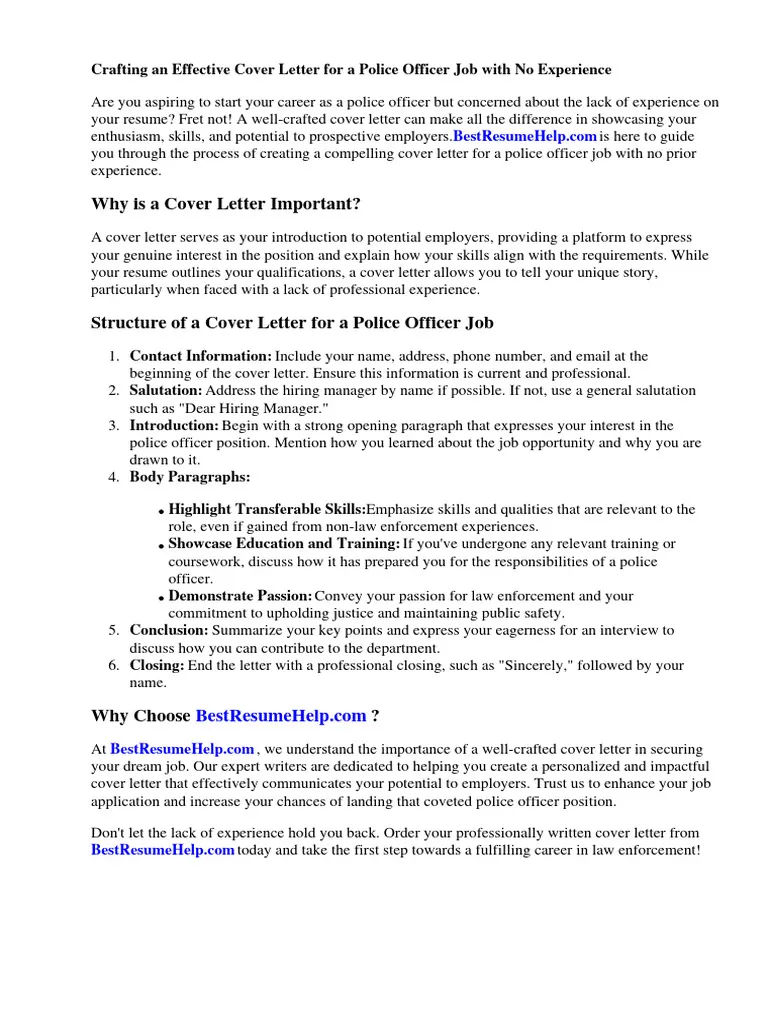Understanding the Safety Officer Role
Before you start writing your cover letter, it’s crucial to understand what a Safety Officer does. This understanding will help you tailor your letter to the specific requirements of the role and demonstrate your genuine interest. Safety Officers are responsible for ensuring a safe working environment. They identify potential hazards, implement safety programs, and conduct inspections to prevent accidents and injuries. Even without direct experience in this role, you can highlight skills and experiences that align with these responsibilities, proving your suitability for the position. Knowing the details of the job allows you to focus your cover letter on the company’s specific needs and helps showcase your understanding and commitment to safety protocols.
Key Responsibilities of a Safety Officer
Safety Officers have a diverse range of responsibilities, which can be used to frame the skills you have and how you apply them. They conduct risk assessments, develop and implement safety policies and procedures, investigate incidents, and provide safety training to employees. The safety officer ensures that the company is compliant with safety regulations, provides regular safety briefings, and maintains safety records. They often collaborate with different departments to foster a culture of safety. Highlighting your awareness of these responsibilities in your cover letter will impress hiring managers, even if you lack direct experience, demonstrating your understanding of the role’s complexities. Showing you understand the variety of tasks that go into the role can show how you can adapt to the job.
Essential Skills for Safety Officers
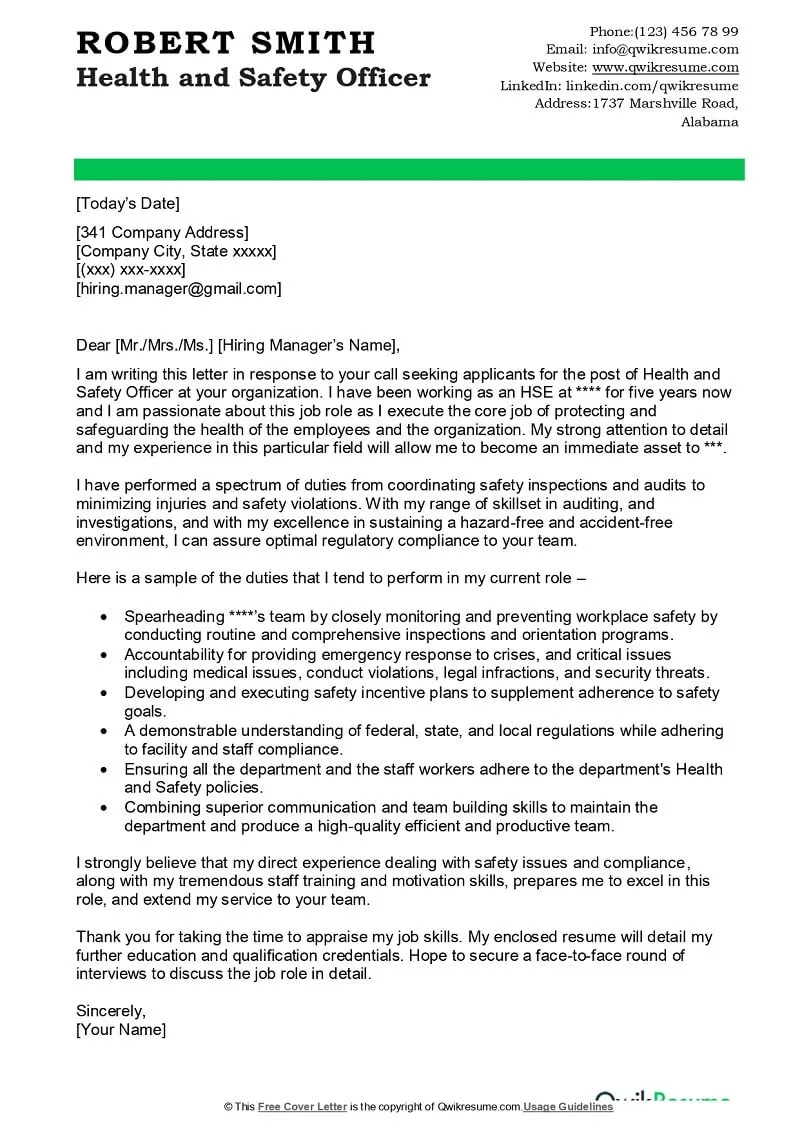
While specific experience is valuable, many soft skills are essential for a Safety Officer. These include strong communication, both written and verbal, as you’ll need to explain complex safety regulations and provide training. Problem-solving skills are essential for identifying hazards and devising effective solutions. Critical thinking is necessary to evaluate situations quickly and make the right decisions. Attention to detail helps to ensure that no hazards are overlooked and that safety procedures are followed correctly. The ability to remain calm under pressure and to handle stressful situations is critical. It’s also important to have strong leadership skills to influence and motivate others to prioritize safety. The cover letter is a great place to show off the essential skills.
Highlighting Transferable Skills
Since you may not have direct experience as a Safety Officer, focus on your transferable skills. These are skills you’ve gained in other roles that are applicable to safety management. For example, if you’ve worked in a customer service role, you can highlight your communication and problem-solving skills. If you have experience in a leadership position, you can emphasize your ability to train, supervise, and motivate others. Even volunteer work or academic projects can provide opportunities to showcase skills like attention to detail, organization, and the ability to follow procedures. It’s all about demonstrating how your past experiences have equipped you to handle the responsibilities of a Safety Officer.
Identifying Relevant Skills from Other Roles
Think about any roles you’ve held, whether in retail, education, or any other field, and identify skills that align with the requirements of a Safety Officer. For instance, if you’ve worked in a role that involved data entry, you can point out your accuracy and attention to detail, important for maintaining safety records. If you’ve been involved in any project management activities, you can highlight your organizational skills and ability to manage multiple tasks simultaneously. Even seemingly unrelated experiences can be valuable. For example, if you’ve volunteered in a community service role, you can demonstrate your commitment to helping others and ensuring their well-being. Look for overlaps and emphasize those.
Structuring Your Cover Letter
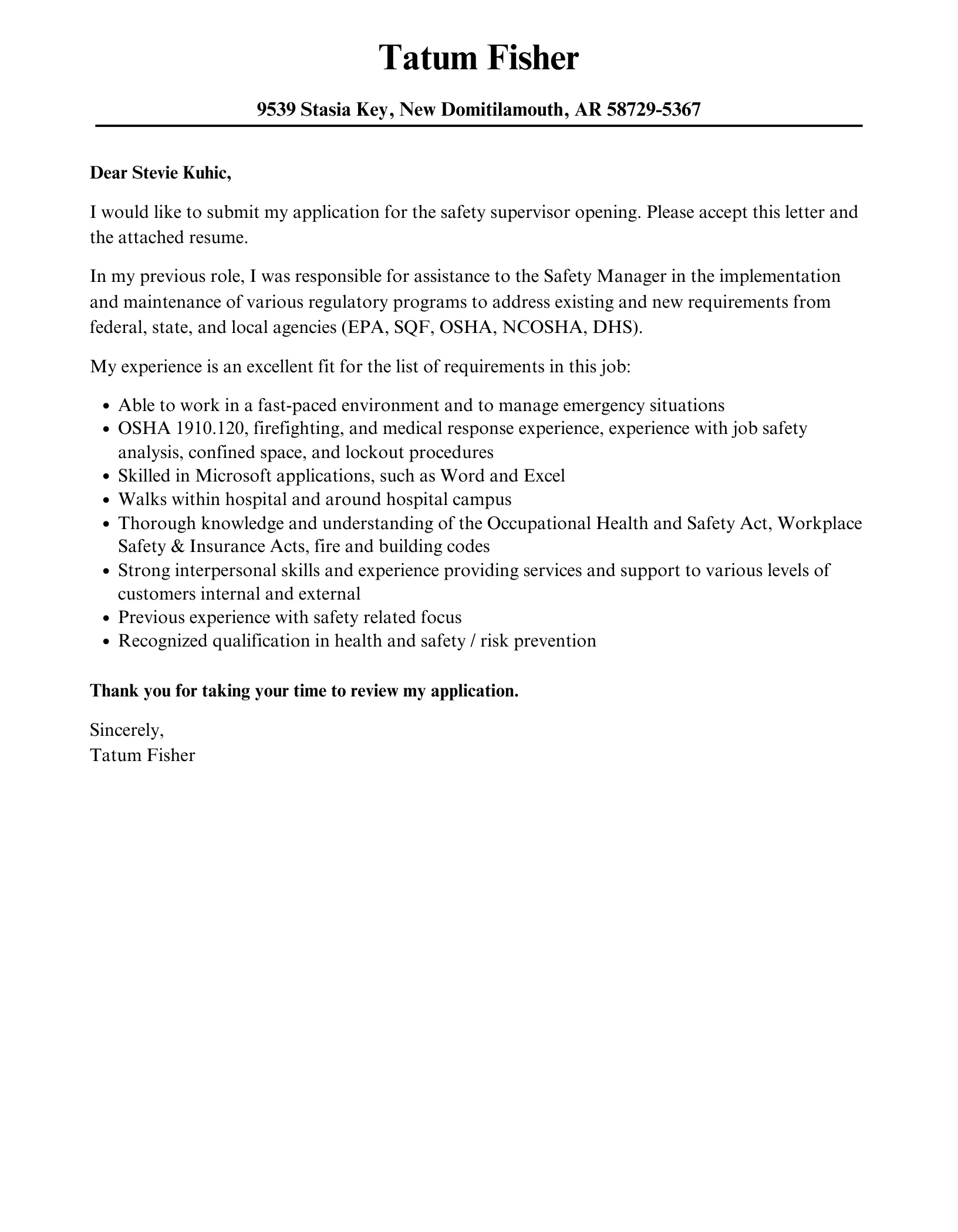
The structure of your cover letter is essential to making a positive impression. Start with a clear and professional heading that includes your contact information and the date. Follow this with a formal salutation, such as Dear Mr./Ms. [Last Name]. The body of your cover letter should consist of several paragraphs. The first paragraph should state your purpose for writing and indicate the position you are applying for. The subsequent paragraphs should highlight your qualifications, skills, and experiences. The final paragraph should re-iterate your interest in the role, express your willingness to meet for an interview, and include a professional closing, such as Sincerely, followed by your name.
The Importance of a Strong Opening
The opening paragraph is crucial, as it’s your first opportunity to make a positive impression. State clearly the position you’re applying for and where you found the job posting. Then, briefly explain why you’re interested in the role and what makes you a strong candidate. While you may lack direct experience, this is your chance to grab the reader’s attention by conveying your enthusiasm, highlighting a key skill, or mentioning something specific that interests you about the company or the role. A strong opening sets the tone for the rest of your cover letter and encourages the hiring manager to read further.
Writing a Compelling Body Paragraph
The body of your cover letter is where you showcase your skills and qualifications. This is where you expand on your relevant experiences and skills, using specific examples to demonstrate your capabilities. For each skill you mention, provide a brief example of how you’ve utilized it in the past. Use the STAR method (Situation, Task, Action, Result) to structure your examples, making them clear, concise, and impactful. Avoid simply listing your skills. Instead, tell a story about how you applied them and what positive outcome resulted. This approach helps the hiring manager to envision you in the role and makes your cover letter more memorable.
Showcasing Your Enthusiasm and Motivation
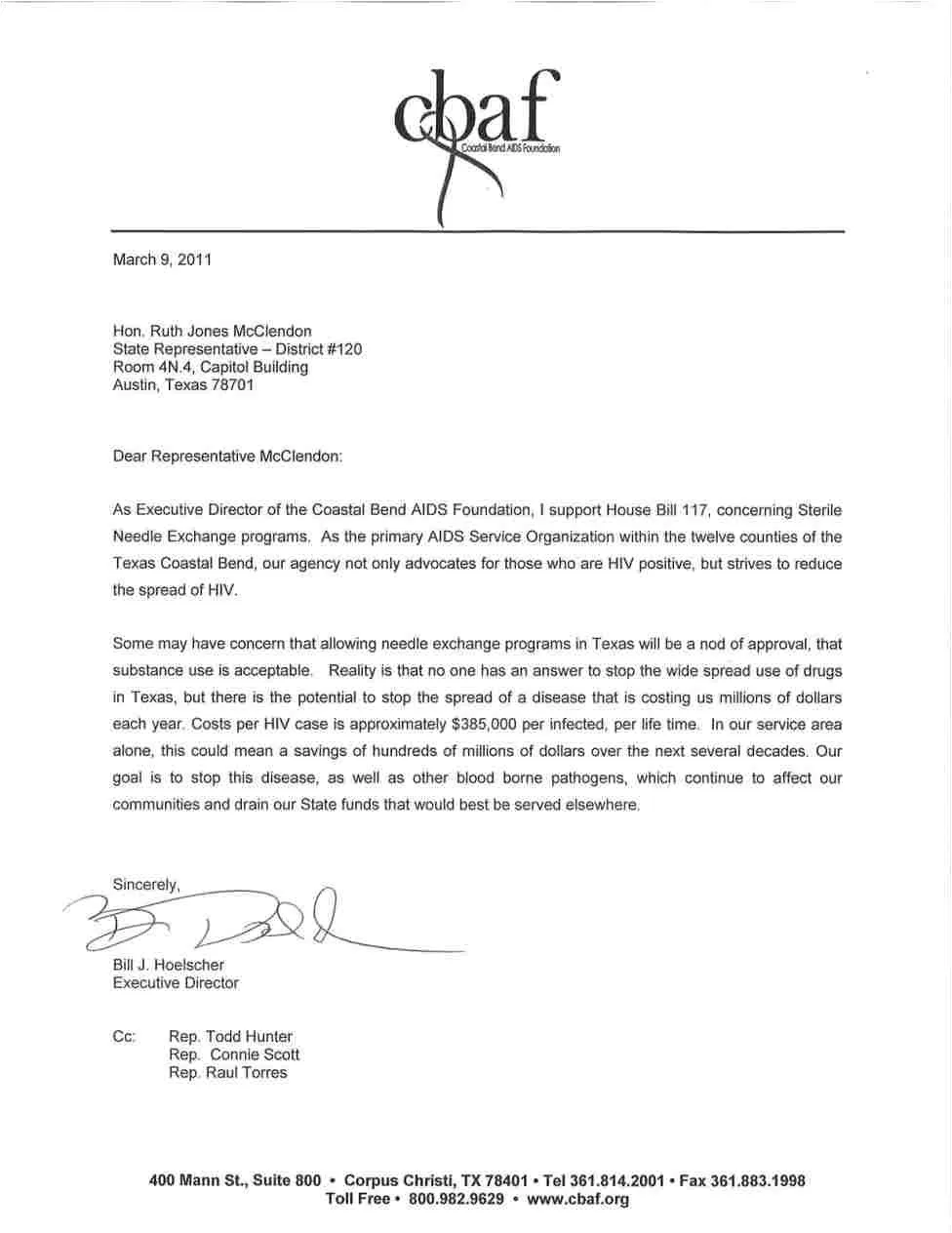
Even without experience, you can demonstrate your enthusiasm and genuine interest in the role. Explain what motivates you to become a Safety Officer. Do you have a strong commitment to safety, or are you drawn to the problem-solving aspects of the job? Mentioning your passion for workplace safety can go a long way. Show that you’ve researched the company and understand its values and mission. Explain why you believe your skills and aspirations align with the company’s needs. This demonstrates that you’re not just applying for any job, but that you’re truly interested in working for this specific organization.
Emphasizing Your Commitment to Safety
Clearly state your commitment to safety throughout your cover letter. Convey your understanding of safety regulations and your dedication to creating a safe working environment. If you’ve taken any safety-related courses or certifications, mention them here. If you have volunteered in any roles where safety was a priority, briefly describe those experiences. Even if you don’t have formal qualifications, you can demonstrate your commitment by explaining your understanding of safety procedures and protocols, such as hazard identification, risk assessment, and emergency response. Make it clear that safety is not just a job requirement to you, but a personal value.
Crafting a Powerful Closing
Your closing paragraph should be concise and memorable. Reiterate your interest in the position and your enthusiasm for the company. Thank the hiring manager for their time and consideration. Express your willingness to attend an interview at their earliest convenience. Provide your contact information again, making it easy for the hiring manager to reach you. Avoid generic phrases such as “Thank you for your consideration.” Instead, personalize your closing, showing that you’ve carefully considered the company’s needs and the job requirements.
Proofreading and Editing Your Cover Letter
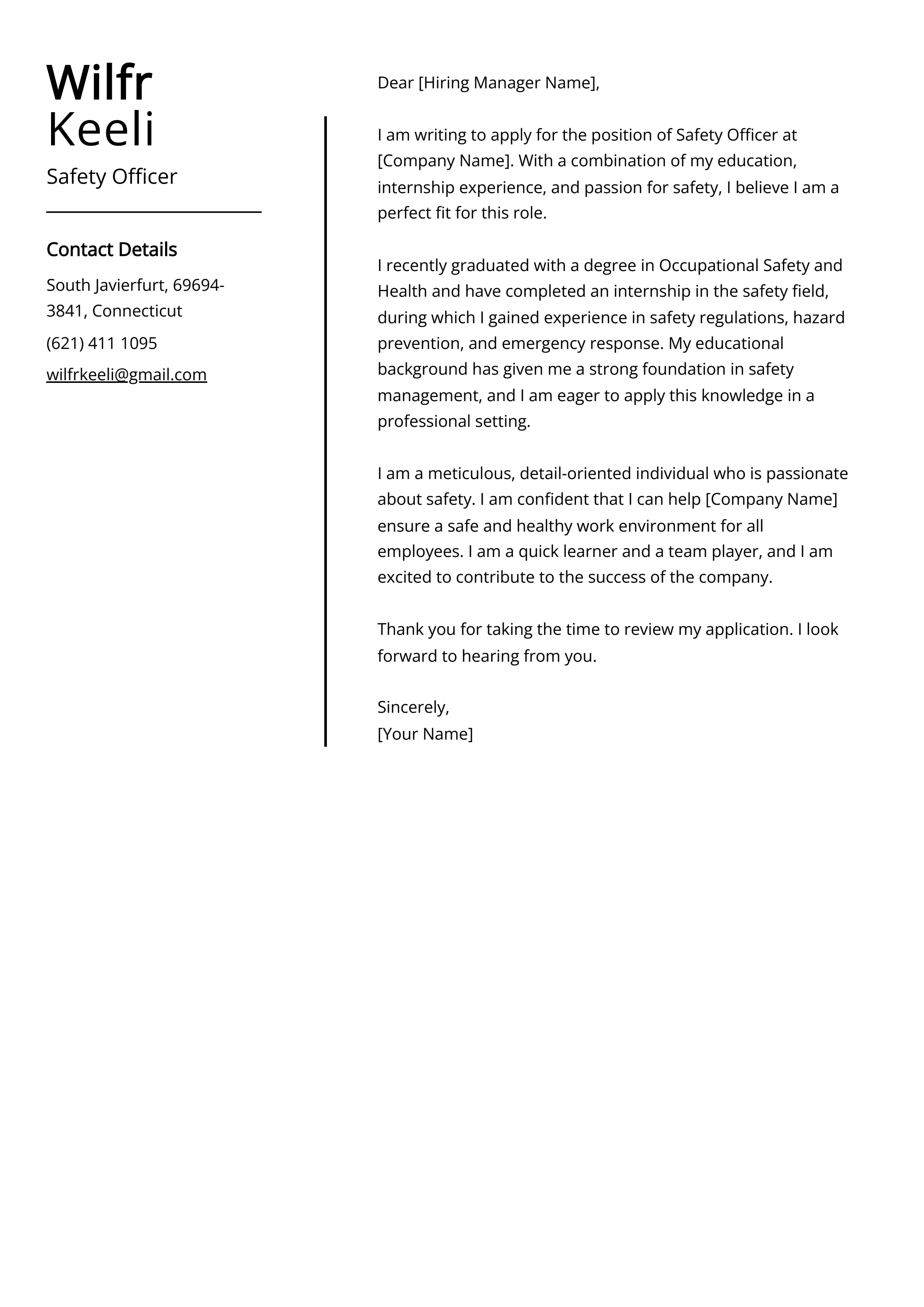
Before submitting your cover letter, thoroughly proofread and edit it. Errors in grammar and spelling can negatively impact your application, potentially signaling a lack of attention to detail, which is a critical skill for a Safety Officer. Ensure your cover letter is free of any typographical errors and that it flows logically. Ask a friend or family member to review it as a second pair of eyes can often catch mistakes you might miss. Read the letter aloud to check for any awkward phrasing or unclear sentences. A well-written, error-free cover letter demonstrates your professionalism and your commitment to excellence.
Common Mistakes to Avoid
Several common mistakes can undermine your cover letter. Avoid generic cover letters; customize each letter to the specific job and company. Do not simply repeat your resume; use the cover letter to elaborate on your skills and experiences. Avoid negative language and focus on what you can offer, rather than what you lack. Don’t include irrelevant information. Every sentence should contribute to your goal of convincing the hiring manager that you are a good fit for the role. Avoid using jargon that the hiring manager might not understand.
Using Action Verbs Effectively
Use strong action verbs to describe your skills and accomplishments. Action verbs make your cover letter more dynamic and compelling. For instance, instead of saying you ‘had responsibility for,’ use words like ‘managed,’ ‘coordinated,’ or ‘oversaw’. Instead of saying you ‘worked on projects,’ use ‘implemented,’ ‘developed,’ or ’executed’. Use verbs that highlight your accomplishments and skills, such as ’trained,’ ‘analyzed,’ ‘improved,’ or ‘streamlined.’ This will make your cover letter more powerful, and allow your skills to pop on the page.
Tailoring Your Cover Letter
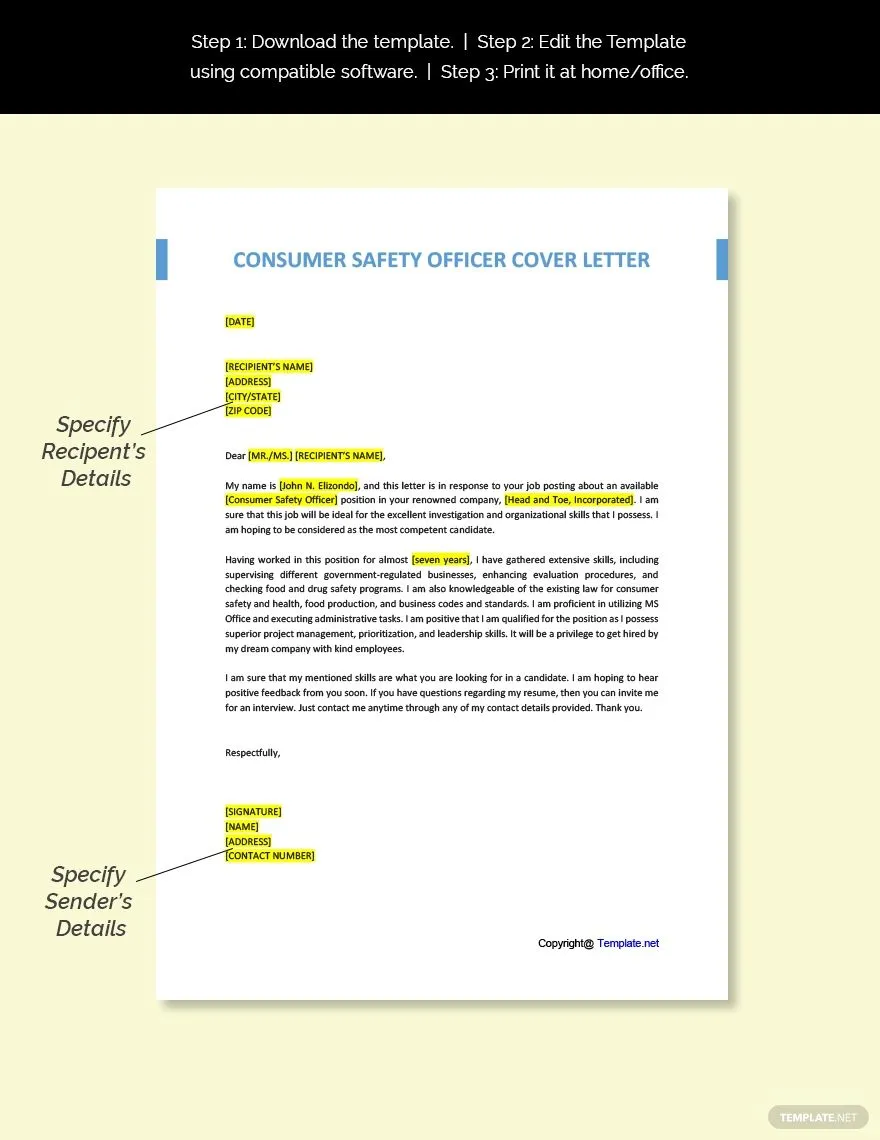
Do not send a generic cover letter to all applications. Tailor your cover letter for each job. Customize it to address the specific requirements mentioned in the job description. Research the company and learn about its mission and values. Highlight the skills and experiences most relevant to the particular role. This demonstrates your genuine interest and shows the hiring manager that you’ve taken the time to understand their needs. Customizing your cover letter increases the likelihood of getting an interview and landing the job.
Researching the Company
Before you apply for a job, research the company. Understand its industry, its values, and its approach to safety. Visit their website, read news articles about the company, and browse their social media profiles. The more you know about the company, the better you can tailor your cover letter to their needs and demonstrate your genuine interest. You can also identify specific safety challenges the company faces and explain how your skills and experiences can help address those challenges. This proactive approach can significantly impress the hiring manager and make your application stand out.
Customizing Your Letter for Each Application
Customizing each cover letter is essential to showcase your genuine interest in the company and the specific role. Review the job description carefully and highlight the skills and qualifications that align with the requirements. Reference the company’s mission, values, and safety initiatives to demonstrate you understand their priorities. Research recent news or projects related to the company and weave this knowledge into your cover letter. Doing so displays you’ve put in the effort and are serious about securing the position. Personalize your letter by addressing the hiring manager by name, if possible, to build a stronger connection. With a customized approach, your cover letter becomes a strong reflection of your interest in that specific company.
